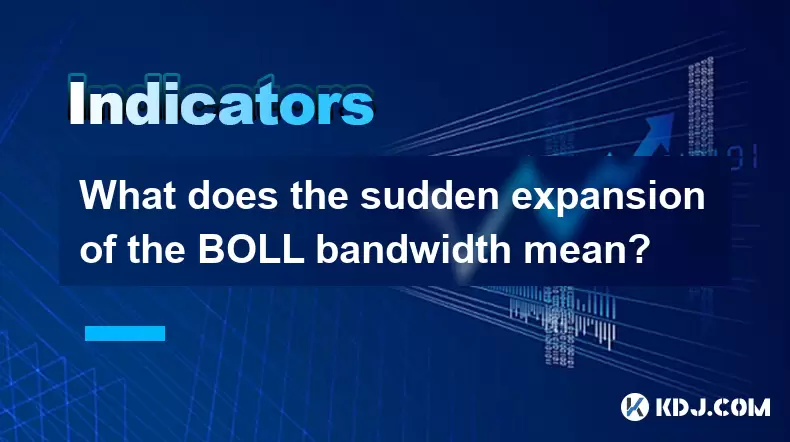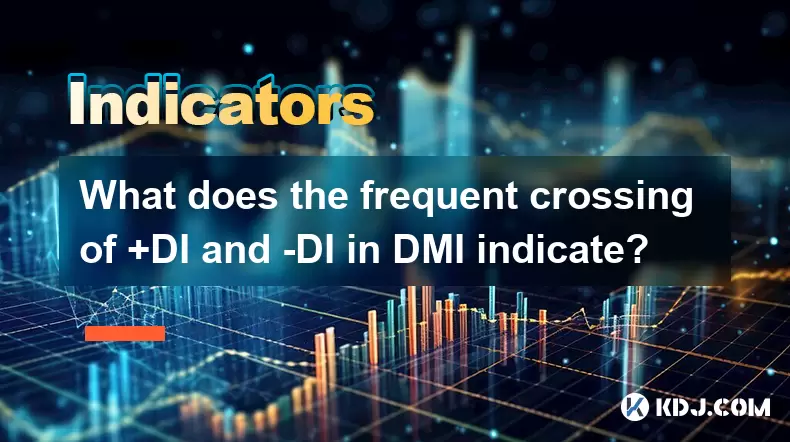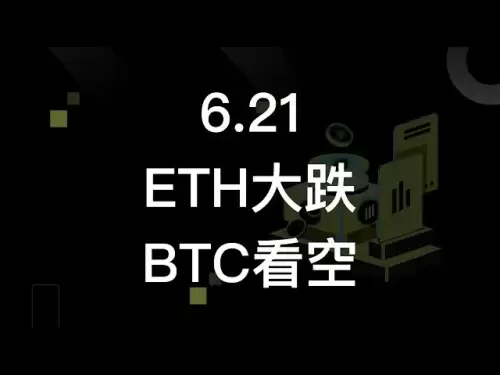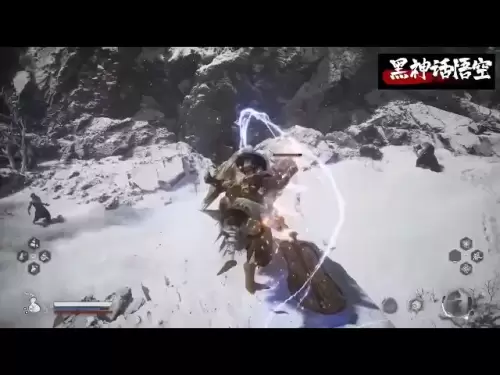-
 Bitcoin
Bitcoin $106,754.6083
1.33% -
 Ethereum
Ethereum $2,625.8249
3.80% -
 Tether USDt
Tether USDt $1.0001
-0.03% -
 XRP
XRP $2.1891
1.67% -
 BNB
BNB $654.5220
0.66% -
 Solana
Solana $156.9428
7.28% -
 USDC
USDC $0.9998
0.00% -
 Dogecoin
Dogecoin $0.1780
1.14% -
 TRON
TRON $0.2706
-0.16% -
 Cardano
Cardano $0.6470
2.77% -
 Hyperliquid
Hyperliquid $44.6467
10.24% -
 Sui
Sui $3.1128
3.86% -
 Bitcoin Cash
Bitcoin Cash $455.7646
3.00% -
 Chainlink
Chainlink $13.6858
4.08% -
 UNUS SED LEO
UNUS SED LEO $9.2682
0.21% -
 Avalanche
Avalanche $19.7433
3.79% -
 Stellar
Stellar $0.2616
1.64% -
 Toncoin
Toncoin $3.0222
2.19% -
 Shiba Inu
Shiba Inu $0.0...01220
1.49% -
 Hedera
Hedera $0.1580
2.75% -
 Litecoin
Litecoin $87.4964
2.29% -
 Polkadot
Polkadot $3.8958
3.05% -
 Ethena USDe
Ethena USDe $1.0000
-0.04% -
 Monero
Monero $317.2263
0.26% -
 Bitget Token
Bitget Token $4.5985
1.68% -
 Dai
Dai $0.9999
0.00% -
 Pepe
Pepe $0.0...01140
2.44% -
 Uniswap
Uniswap $7.6065
5.29% -
 Pi
Pi $0.6042
-2.00% -
 Aave
Aave $289.6343
6.02%
How to judge the direction when the KDJ indicator is blunted for a long time?
The KDJ indicator can become blunted in strong crypto trends, remaining at extreme levels for extended periods, which requires traders to use divergence analysis, multi-timeframe evaluation, and volume confirmation to judge market direction effectively.
Jun 21, 2025 at 10:56 am

Understanding KDJ Indicator Basics
The KDJ indicator is a momentum oscillator widely used in technical analysis to identify overbought or oversold conditions in the market. It consists of three lines: the %K line, the %D line (which is a smoothed version of %K), and the %J line (a projection of the %K and %D relationship). In cryptocurrency trading, where volatility can be extreme, understanding how these lines interact is crucial.
When traders talk about the KDJ being blunted, they are referring to a situation where the indicator remains at extreme levels—either near 0 or 100—for an extended period without reversing. This typically occurs during strong trending markets where price continues moving in one direction despite the indicator suggesting overbought or oversold conditions.
Causes of KDJ Blunting in Crypto Markets
In highly volatile environments like cryptocurrency, KDJ blunting often happens due to prolonged bullish or bearish trends. During such times, prices may keep rising or falling without meaningful pullbacks, causing the indicator to stay in overbought (>80) or oversold (<20) zones for long periods.
- Strong buying pressure in bull runs keeps the %K and %D lines high, preventing them from crossing down.
- Similarly, sustained selling pressure in bear markets holds the lines low, not allowing them to reverse upward.
This phenomenon is particularly common in altcoin markets, where sudden surges or dumps driven by social sentiment or macroeconomic factors can cause extended trend movements.
Identifying Market Direction During KDJ Blunting
When the KDJ indicator becomes blunted, traditional signals like crossovers lose effectiveness. Traders must look beyond the indicator itself and incorporate other tools and observations:
- Use price action patterns to determine whether the trend still has strength. For example, higher highs and higher lows in uptrends or lower lows and lower highs in downtrends suggest continuation.
- Observe volume changes alongside price movement. Sustained volume during blunting indicates real participation, reinforcing the current trend.
- Combine with moving averages, especially longer-term ones like the 50-day or 200-day EMA, to assess the broader trend direction.
It’s essential to understand that while KDJ might appear stuck, the underlying price and volume behavior often tell a clearer story.
Using Divergence Analysis to Judge Trend Reversals
One of the most effective ways to interpret market direction when the KDJ is blunted is through divergence analysis. Divergence occurs when price makes a new high or low but the KDJ does not confirm it.
- Bullish divergence: Price makes a lower low, but KDJ makes a higher low—this could signal a potential reversal from a downtrend.
- Bearish divergence: Price makes a higher high, but KDJ makes a lower high—indicating weakening momentum in an uptrend.
To spot divergence:
- Draw trendlines on both price and KDJ.
- Look for discrepancies between their movements.
- Confirm with candlestick patterns or support/resistance levels before taking positions.
This method allows traders to remain cautious even when the KDJ appears unresponsive.
Incorporating Multi-Timeframe Analysis
Another strategy involves analyzing multiple timeframes simultaneously. When the KDJ is blunted on a daily chart, checking the weekly or hourly charts can provide additional context.
- On higher timeframes, the KDJ might show more meaningful signals due to reduced noise and volatility.
- Lower timeframes can reveal short-term reversals or consolidations within the larger trend.
For instance, if the daily KDJ is stuck at overbought levels but the weekly shows a bearish crossover, it may hint at a larger correction ahead. Conversely, if the hourly chart shows a bullish divergence while the daily remains overbought, it might indicate a continuation of the trend after a minor pullback.
Frequently Asked Questions
Q: Can I trade solely based on KDJ when it's blunted?
No, trading solely based on the KDJ indicator during blunting is risky. The indicator loses its predictive power in such situations. It should always be combined with price action, volume, and other indicators for confirmation.
Q: How long can KDJ remain blunted in crypto markets?
There is no fixed duration, but in cryptocurrency, the KDJ can stay blunted for days or even weeks during strong trends. Altcoins and memecoins are especially prone to this due to rapid price swings driven by speculation.
Q: Is KDJ more reliable in certain cryptocurrencies than others?
Yes, KDJ tends to be more reliable in major cryptocurrencies like Bitcoin and Ethereum due to their relatively higher liquidity and less manipulation compared to smaller altcoins. However, even in these assets, caution is needed during strong trends.
Q: What alternative indicators work well with KDJ during blunting?
Indicators like MACD, RSI, and Bollinger Bands can complement KDJ during blunting. MACD helps identify momentum shifts, RSI offers another view on overbought/oversold conditions, and Bollinger Bands help gauge volatility and possible breakout points.
Disclaimer:info@kdj.com
The information provided is not trading advice. kdj.com does not assume any responsibility for any investments made based on the information provided in this article. Cryptocurrencies are highly volatile and it is highly recommended that you invest with caution after thorough research!
If you believe that the content used on this website infringes your copyright, please contact us immediately (info@kdj.com) and we will delete it promptly.
- BNB Price Eyes $730 Target After ATH Rally Attempt
- 2025-06-21 16:25:12
- XRP Price: Market Breakout Imminent? Analyzing the Predictions
- 2025-06-21 16:25:12
- Shiba Inu, Cryptocurrency, and Investment: Beyond the Hype
- 2025-06-21 16:30:11
- AI Token Showdown: Can Ruvi AI Outpace Cardano to $1?
- 2025-06-21 16:45:11
- AI Token Race: Can Ruvi AI Outpace Cardano to the $1 Target?
- 2025-06-21 16:45:11
- Brand Ownership Redefined: Alki David's Crypto Revolution
- 2025-06-21 17:05:12
Related knowledge

Does the sudden contraction of ATR indicate the end of the trend?
Jun 20,2025 at 11:14pm
Understanding ATR and Its Role in Technical AnalysisThe Average True Range (ATR) is a technical indicator used to measure market volatility. Developed by J. Welles Wilder, ATR calculates the average range of price movement over a specified period, typically 14 periods. It does not indicate direction—only volatility. Traders use ATR to gauge how much an ...

Is it invalid if the DMI crosses but the ADX does not expand?
Jun 21,2025 at 09:35am
Understanding the DMI and ADX RelationshipIn technical analysis, the Directional Movement Index (DMI) consists of two lines: +DI (Positive Directional Indicator) and -DI (Negative Directional Indicator). These indicators are used to determine the direction of a trend. When +DI crosses above -DI, it is often interpreted as a bullish signal, while the opp...

Is the trend continuation when the Williams indicator is oversold but there is no rebound?
Jun 20,2025 at 11:42pm
Understanding the Williams %R IndicatorThe Williams %R indicator, also known as the Williams Percent Range, is a momentum oscillator used in technical analysis to identify overbought and oversold levels in price movements. It typically ranges from 0 to -100, where values above -20 are considered overbought and values below -80 are considered oversold. T...

What does the sudden expansion of the BOLL bandwidth mean?
Jun 21,2025 at 01:49pm
Understanding the BOLL IndicatorThe BOLL (Bollinger Bands) indicator is a widely used technical analysis tool in cryptocurrency trading. It consists of three lines: a simple moving average (SMA) in the center, with upper and lower bands calculated based on standard deviations from that SMA. These bands dynamically adjust to price volatility. When trader...

Is the golden cross of the ROC indicator below the zero axis effective?
Jun 20,2025 at 09:42pm
Understanding the ROC Indicator and Its Role in Cryptocurrency TradingThe Rate of Change (ROC) indicator is a momentum oscillator widely used by traders to assess the speed at which cryptocurrency prices are changing. It measures the percentage difference between the current price and the price from a certain number of periods ago. The ROC helps identif...

What does the frequent crossing of +DI and -DI in DMI indicate?
Jun 21,2025 at 05:14pm
Understanding the DMI and Its ComponentsThe Directional Movement Index (DMI) is a technical analysis tool used to identify the strength and direction of a trend. It consists of two lines: +DI (Positive Directional Indicator) and -DI (Negative Directional Indicator), along with the ADX (Average Directional Index) line which measures trend strength. In cr...

Does the sudden contraction of ATR indicate the end of the trend?
Jun 20,2025 at 11:14pm
Understanding ATR and Its Role in Technical AnalysisThe Average True Range (ATR) is a technical indicator used to measure market volatility. Developed by J. Welles Wilder, ATR calculates the average range of price movement over a specified period, typically 14 periods. It does not indicate direction—only volatility. Traders use ATR to gauge how much an ...

Is it invalid if the DMI crosses but the ADX does not expand?
Jun 21,2025 at 09:35am
Understanding the DMI and ADX RelationshipIn technical analysis, the Directional Movement Index (DMI) consists of two lines: +DI (Positive Directional Indicator) and -DI (Negative Directional Indicator). These indicators are used to determine the direction of a trend. When +DI crosses above -DI, it is often interpreted as a bullish signal, while the opp...

Is the trend continuation when the Williams indicator is oversold but there is no rebound?
Jun 20,2025 at 11:42pm
Understanding the Williams %R IndicatorThe Williams %R indicator, also known as the Williams Percent Range, is a momentum oscillator used in technical analysis to identify overbought and oversold levels in price movements. It typically ranges from 0 to -100, where values above -20 are considered overbought and values below -80 are considered oversold. T...

What does the sudden expansion of the BOLL bandwidth mean?
Jun 21,2025 at 01:49pm
Understanding the BOLL IndicatorThe BOLL (Bollinger Bands) indicator is a widely used technical analysis tool in cryptocurrency trading. It consists of three lines: a simple moving average (SMA) in the center, with upper and lower bands calculated based on standard deviations from that SMA. These bands dynamically adjust to price volatility. When trader...

Is the golden cross of the ROC indicator below the zero axis effective?
Jun 20,2025 at 09:42pm
Understanding the ROC Indicator and Its Role in Cryptocurrency TradingThe Rate of Change (ROC) indicator is a momentum oscillator widely used by traders to assess the speed at which cryptocurrency prices are changing. It measures the percentage difference between the current price and the price from a certain number of periods ago. The ROC helps identif...

What does the frequent crossing of +DI and -DI in DMI indicate?
Jun 21,2025 at 05:14pm
Understanding the DMI and Its ComponentsThe Directional Movement Index (DMI) is a technical analysis tool used to identify the strength and direction of a trend. It consists of two lines: +DI (Positive Directional Indicator) and -DI (Negative Directional Indicator), along with the ADX (Average Directional Index) line which measures trend strength. In cr...
See all articles

























































































